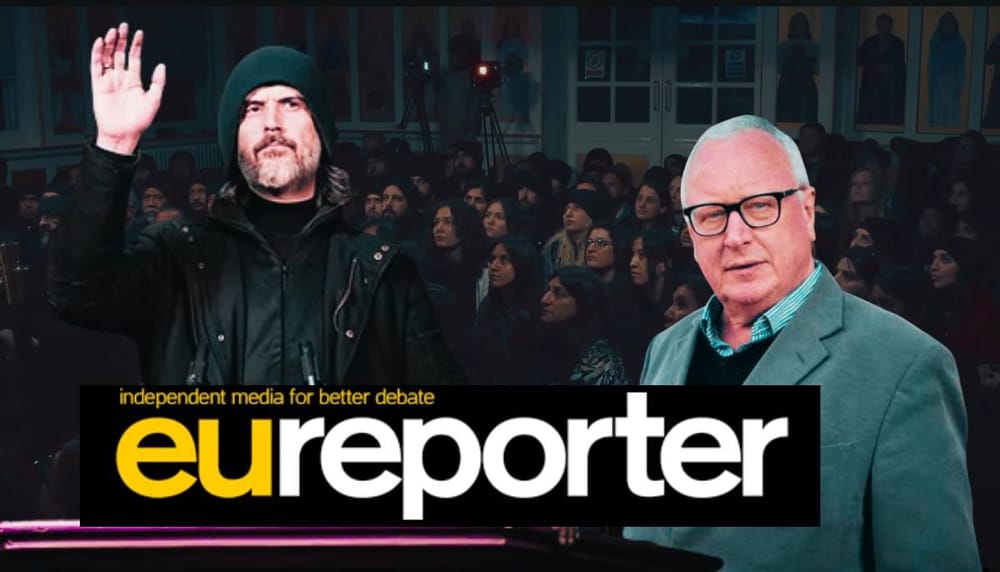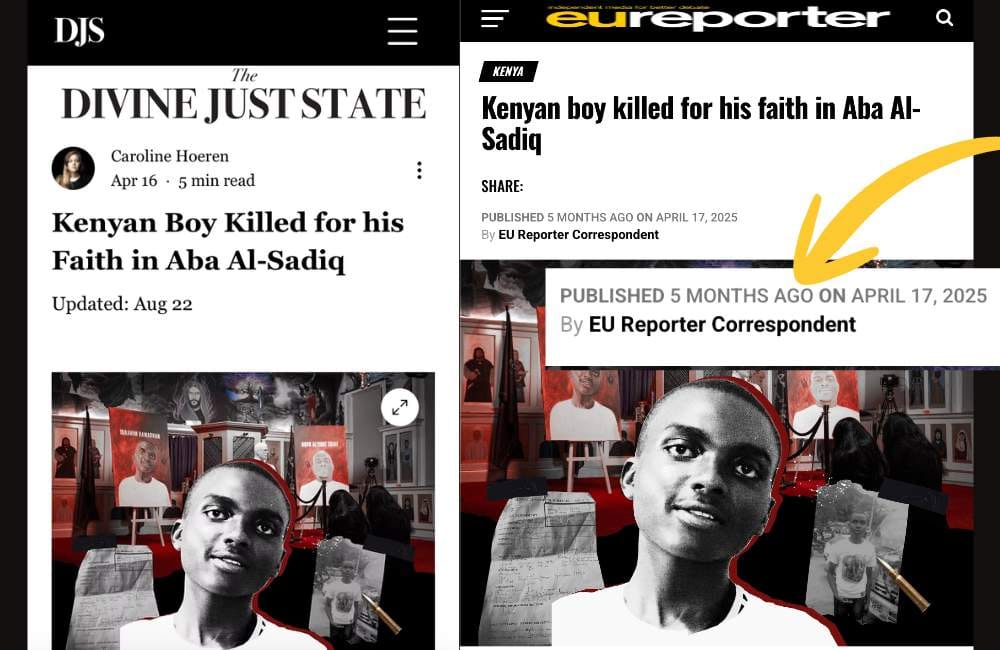
It bills itself as a serious outlet for EU decision-makers. Yet EU Reporter has repeatedly published material from England's doomsday cult under its own byline, disguising the sect’s press releases as independent reporting. The practice mirrors the scandal Politico uncovered in 2021, when the same site ran Huawei propaganda almost word for word—without telling readers it was paid for.
Be Scofield is a prominent cult reporter who exposed Love Has Won, which led to the hit HBO series. She is the author of Hunting Lucifer: One Reporter's Search for Cults and Demons. Her work is cited by the NY Times, Rolling Stone, People, and more. It was also turned into an episode of "Unwell" on Netflix.
SEE ALSO:
- Inside the Doomsday Cult Taking Over the World
- Meet the Shadowy Scholars Supporting England's Doomsday Cult
- 17 Shocking Beliefs of England's Doomsday Cult
By BE SCOFIELD
9/10/25
For nearly two years, the Brussels-based outlet EU Reporter has published glowing coverage of the Ahmadi Religion of Peace and Light—a fringe messianic sect critics describe as a doomsday cult. The site’s few dozen stories are among the only English-language reporting available on the group. But an investigation by Guru Magazine can reveal that this coverage was not independent journalism.
In 2021, Politico exposed EU Reporter for running undisclosed paid campaigns on behalf of powerful companies. One was Huawei, the Chinese telecommunications giant, whose press releases were republished almost word-for-word on EU Reporter under anonymous bylines. Now, the same playbook has been used for the Ahmadi Religion of Peace and Light.
In both cases, the site published content lifted directly from Huawei and the Ahmadi religion's own platforms, presenting it as its own news. These stories were labeled as authored by “EU Reporter Correspondent”—a generic byline that concealed their true origin. In reality, the articles were produced by Huawei’s PR team and Ahmadi's in-house magazine, Divine Just State, then repackaged to appear as European news reporting.
When confronted, Colin Stevens, the owner of EU Reporter, admitted that his outlet had not written the Ahmadi articles published on his site. But then he stumbled into contradiction. Stevens claimed he had concealed the real authors “at the request of the author, to protect the author, an Ahmadi member.” Yet the very same pieces were already published on Ahmadi's own website, Divine Just State, with the authors’ names clearly visible. The explanation collapses under scrutiny: the writers were not hiding at all, raising questions about what Stevens was really trying to protect.
EU Reporter has a history of hiding behind false identities. The Politico investigation found that the outlet regularly published under fake names with stock-photo headshots, presenting them as correspondents. When asked, Stevens defended the practice by claiming it was to protect contributors’ identities—the same justification he later used when challenged about the Ahmadi stories, which we know is false.

Stevens then shifted his story again, conceding that the pieces “were wrongly credited as ‘EU Reporter Correspondent.’” He added, “We are now in the process of correctly relabelling these articles as ‘Press Release.’” The backpedaling only deepens the problem. First he claimed the bylines protected the authors, then he admitted they were a mistake. Such inconsistent explanations undermine his credibility and highlight the lack of transparency in how EU Reporter handles outside content.
Furthermore, the story “Kenyan boy killed for his faith in Aba Al-Sadiq”—republished by EU Reporter after appearing on Divine Just State—is demonstrably false. Independent Kenyan outlets reported that 17-year-old Ibrahim Ramadhan was fatally shot when police opened fire while pursuing a suspected drug trafficker. Officers were later disciplined, and the case drew scrutiny from local watchdogs. Crucially, none of the independent accounts mention Ibrahim’s supposed allegiance to the Ahmadi sect. That framing exists only in the Ahmadi's contrived narrative, which recast his death as religious martyrdom—a claim EU Reporter echoed uncritically.
For years EU Reporter has pushed the cult's message as independent "news."
By its own rules, EU Reporter should have disclosed these Ahmadi stories as sponsored or contributed content. Failing to do so not only obscured their origin but also violated the outlet’s stated editorial policy—which admits the site publishes stories for payment but requires that they be clearly labeled as such.
Once again, EU Reporter has blurred the distinction between journalism and paid promotion. Just as it once recycled Huawei press releases for money, the outlet has now laundered the messaging of a fringe religious sect into the appearance of independent reporting. Colin Stevens’ shifting explanations, the false claims echoed without verification, and the failure to follow the site’s own disclosure rules all point to the same conclusion: EU Reporter is not acting as a newsroom but as a distribution channel for whoever can pay. The cost is not only credibility but also trust in European media at a moment when both are badly needed.
POLITICO'S SERIES ON EU REPORTER:

